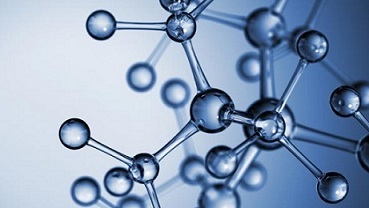
Ionic Bonding
Ionic Bonding
How Are Ionic Bonds Formed To Attain Noble Gas Configuration?
Force of attraction, which holds two or more atoms, ions, or molecules, is called a chemical bond.
Types of bonding:
- Ionic bonding
- Covalent bonding
- Metallic bonding
Positive and negative ions join by transferring electrons between the atoms to form the ionic compound. When an atom loses its electrons, it is called a cation, and when they gain electrons, it is known as an anion.
The chemical bond in which electrons are completely transferred from one atom to another is known as chemical bonding.
Noble gases do not react with other atoms because they are stable. They have 8 electrons in their valance shell; hence the shell is said to be complete or stable. Other atoms react with each other to attain a stable electronic configuration. They either lose, gain, or share electrons to form bonds. Metals lose electrons to form cation and nonmetals gain electrons to form anions.
How Are Ionic Bonds Formed Between Metals And Nonmetals?
Positively charged metallic ions react with negatively charged nonmetallic ions. An electrostatic force of attraction arises between them.
Na+ + Cl- → NaCl
Dot and cross diagrams can be shown to represent ionic bonding in an ionic compound. Note that only the valence shells are shown down below in the diagram.
Source: gcsescience.com
When Na loses its valence electron it gets +1 charge hence Na+, whereas chlorine atom gains an electron from Na to get a -1 charge hence Chloride anion Cl-.
The chemical formula of an ionic compound is written as symbols of the atoms present in an ionic compound. It is kept in mind that the positive charges are equal to the negative charges in an ionic compound, for example, Mg2+ and O2-. Two positive charges cancel out two negative charges; hence the formula will be MgO, magnesium oxide.
To name an ionic compound metal are written first, their subscripts are written as a number on the right-hand side beside the atom. Whereas subscript 1 is not usually written for instance NaCl. For greater than one polyatomic ions, they are written within the brackets such as Cu (OH) 2.
Ionic Lattice:
Sodium chloride is an ionic compound that has a giant ionic lattice. It consists of sodium ions and chloride ions, which are arranged in an organized manner and held together by ionic bonds. The ratio is 1:1. NaCl is the formula unit. The oppositely charged ions such as Na+ and Cl- are attracted to each other strongly to form a giant ionic lattice. Six oppositely charged ions surround each ion in an ionic/crystal lattice.
Physical Properties Of Ionic Compounds According To Their Lattice Structure:
- They are all solids at room temperature and pressure because they consist of oppositely charged ions.
- They are non-volatile and usually soluble in water but insoluble in organic solvents (ethanol, petrol). However, silver chloride and barium sulfate do not dissolve in water.
- They have higher boiling points and melting points because of the strong electrostatic force of attraction.
- They do not conduct electricity in a solid-state but can conduct electricity in molten state/ aqueous solution. Free moving ions present in ionic compounds or aqueous solutions of ionic compounds can conduct electricity. Free moving electrons present in metals and graphite can conduct electricity. In solid-state ions are tightly packet not moving freely. However, in molten or liquid and aqueous solutions ions are free to move.
- Sodium chloride has a melting point of 80 degree Celsius. In contrast, magnesium oxide has a greater melting point of 2800 degree Celsius. This is because it has a stronger electrostatic force of attraction between oxygen and magnesium ions due to higher charger, i.e., +2 and -2.
- Substances with an increased melting point are called refractory materials. Uses of magnesium oxide are lining of the furnace and in electrical insulators.
